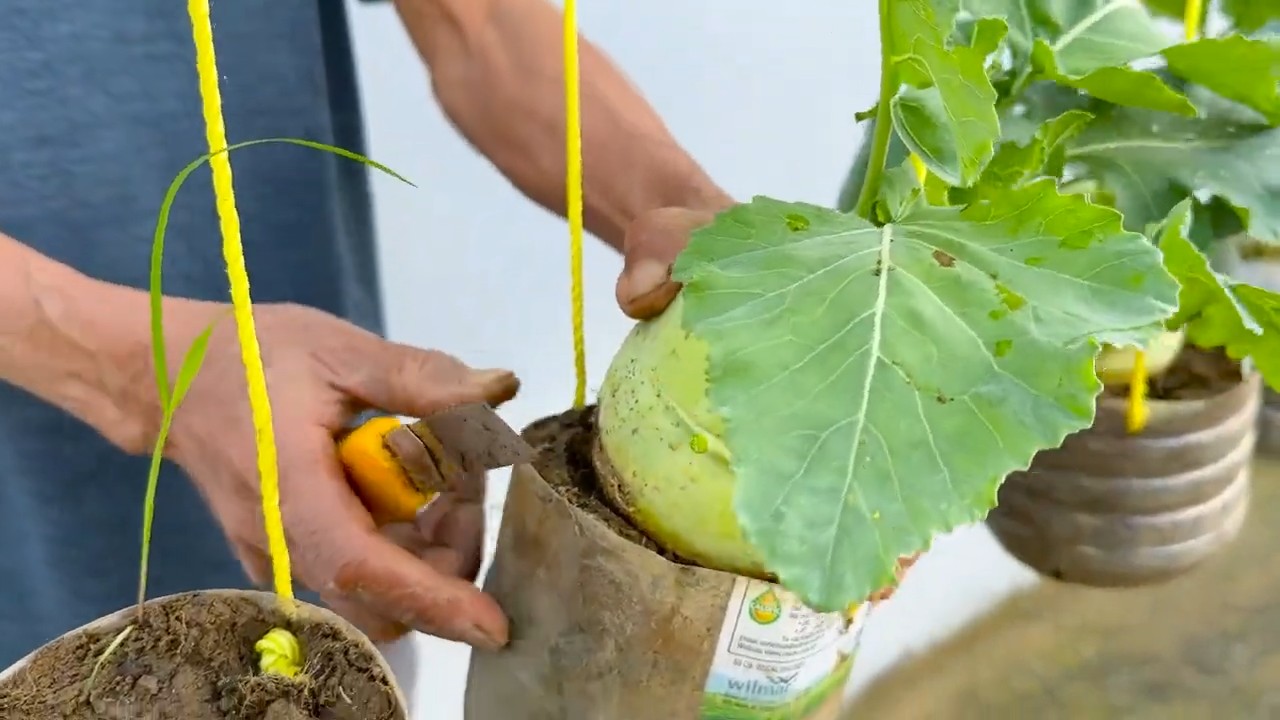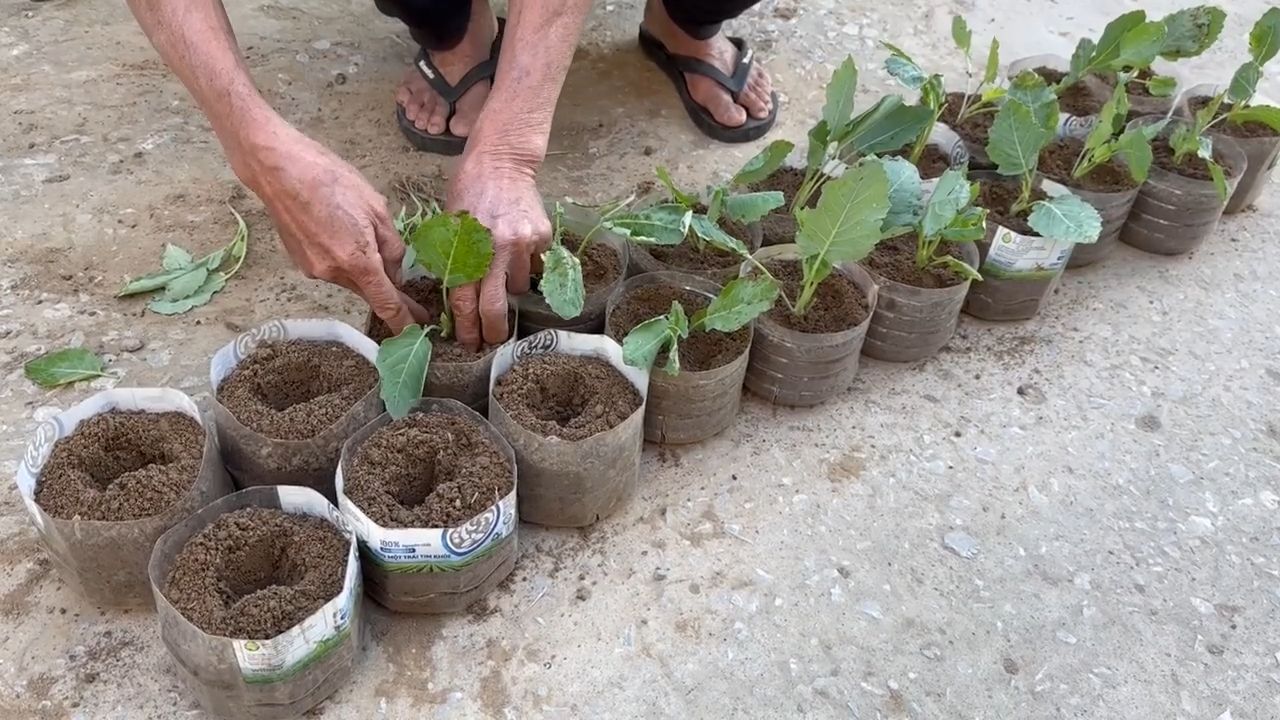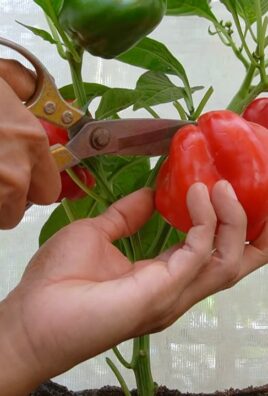Hanging garden DIY build projects are taking the gardening world by storm, and for good reason! Imagine transforming your balcony, patio, or even a sunny corner indoors into a lush, vertical oasis. Forget cramped flowerbeds and limited space; with a hanging garden, you can cultivate a vibrant collection of herbs, flowers, and even vegetables, all suspended in mid-air.
The concept of hanging gardens isn’t new. Think back to the legendary Hanging Gardens of Babylon, one of the Seven Wonders of the Ancient World! While our DIY versions might not rival that architectural marvel, they tap into the same desire to bring nature into our living spaces in innovative and beautiful ways. For centuries, cultures around the globe have utilized vertical gardening techniques to maximize space and enhance their surroundings.
Why should you embark on a hanging garden DIY build? Well, for starters, it’s a fantastic solution for those of us with limited ground space. Apartment dwellers, rejoice! But beyond space-saving, hanging gardens offer numerous benefits. They can improve air quality, add a touch of tranquility to your home, and even provide fresh, homegrown produce right at your fingertips. Plus, let’s be honest, they look absolutely stunning! In this article, I’ll guide you through some easy and creative DIY hanging garden projects that will transform your space and bring a little bit of paradise into your life. Get ready to get your hands dirty (in the best way possible!).

DIY Hanging Garden: Bring Greenery to New Heights!
Hey there, fellow plant lovers! Are you dreaming of a lush, vibrant garden but short on space? Or maybe you just want to add a unique, eye-catching element to your balcony or patio? Well, you’ve come to the right place! I’m going to walk you through building your very own hanging garden. It’s a surprisingly simple project that can transform any area into a green oasis. Get ready to get your hands dirty (in a good way!).
What You’ll Need: The Supply List
Before we dive in, let’s gather our supplies. This list might seem long, but don’t worry, most of these items are readily available at your local hardware store or garden center.
* Wooden Pallet: This is the backbone of our hanging garden. Look for a sturdy pallet in good condition. Avoid pallets that have been treated with chemicals (look for the “HT” stamp, which means heat-treated). You can often find these for free at local businesses.
* Heavy-Duty Landscape Fabric: This will line the pallet and create pockets for our plants.
* Staple Gun and Staples: Essential for securing the landscape fabric to the pallet.
* Gloves: Protect your hands from splinters and dirt.
* Scissors or Utility Knife: For cutting the landscape fabric.
* Measuring Tape: To ensure accurate cuts and spacing.
* Potting Soil: Choose a high-quality potting mix that drains well.
* Plants: Select plants that are suitable for hanging baskets and the amount of sunlight your garden will receive. Think trailing plants like petunias, strawberries, herbs, or succulents.
* Sandpaper (Optional): To smooth out any rough edges on the pallet.
* Wood Stain or Paint (Optional): To customize the look of your pallet.
* Heavy-Duty Hooks or Chain: For hanging the pallet. Make sure they are strong enough to support the weight of the pallet, soil, and plants.
* Drill and Drill Bits: To create pilot holes for the hooks or chain.
* Watering Can or Hose: For watering your plants.
* Safety Glasses: To protect your eyes from flying debris.
Step-by-Step Instructions: Building Your Hanging Garden
Okay, let’s get started! I’ve broken down the process into easy-to-follow steps.
1. Prepare the Pallet:
* Inspect the Pallet: Carefully examine the pallet for any loose nails, splinters, or damage. Remove any loose nails and sand down any rough edges with sandpaper. This step is crucial for safety and aesthetics.
* Clean the Pallet: Use a brush or hose to clean the pallet thoroughly. Remove any dirt, debris, or cobwebs. Let it dry completely before proceeding.
* (Optional) Stain or Paint the Pallet: If you want to customize the look of your hanging garden, now is the time to stain or paint the pallet. Choose a color that complements your plants and outdoor space. Apply the stain or paint according to the manufacturer’s instructions and let it dry completely. I personally love a rustic, weathered look, so I often opt for a light stain.
2. Create the Planting Pockets:
* Measure and Cut the Landscape Fabric: This is where the measuring tape comes in handy! Measure the width and depth of each section of the pallet where you want to create a planting pocket. Add a few extra inches to each measurement to allow for overlap and stapling. Cut the landscape fabric into rectangular pieces based on your measurements. You’ll need one piece of fabric for each planting pocket.
* Attach the Landscape Fabric: This is where the staple gun comes into play. Fold the edges of the landscape fabric over to create a clean, finished edge. This will also prevent the fabric from fraying. Place the fabric inside the section of the pallet, creating a pocket. Use the staple gun to secure the fabric to the pallet. Make sure the staples are close together to create a strong, watertight seal. I like to start by stapling the top edge, then the sides, and finally the bottom.
* Repeat for Each Pocket: Repeat the measuring, cutting, and stapling process for each section of the pallet where you want to create a planting pocket. Make sure each pocket is securely attached and can hold soil without leaking.
3. Prepare for Hanging:
* Determine Hanging Points: Decide where you want to hang your pallet garden. Consider the weight of the pallet, soil, and plants when choosing your hanging points. The top corners of the pallet are usually the strongest and most suitable.
* Drill Pilot Holes: Use a drill and drill bit to create pilot holes at the chosen hanging points. The pilot holes should be slightly smaller than the diameter of your hooks or chain. This will make it easier to screw in the hooks and prevent the wood from splitting.
* Attach Hooks or Chain: Screw the heavy-duty hooks into the pilot holes. Make sure they are securely attached and can support the weight of the pallet. Alternatively, you can attach a chain to the pallet using eye bolts and S-hooks.
4. Plant Your Garden:
* Add Potting Soil: Carefully fill each planting pocket with potting soil. Leave some space at the top to prevent the soil from spilling out when you water the plants.
* Plant Your Plants: Gently remove your plants from their containers and loosen the roots. Plant them in the potting soil, spacing them according to their mature size. Water the plants thoroughly after planting.
* Arrange and Secure Plants: Arrange the plants in a way that is visually appealing and allows them to receive adequate sunlight. You can use small stakes or plant ties to secure the plants in place, especially if they are top-heavy.
5. Hang Your Garden:
* Choose a Location: Select a location for your hanging garden that receives the appropriate amount of sunlight for your chosen plants. Make sure the location is easily accessible for watering and maintenance.
* Hang the Pallet: Carefully lift the pallet and hang it from the hooks or chain. Make sure the pallet is securely attached and level.
* Water and Enjoy: Water your plants regularly and enjoy your beautiful new hanging garden!
Choosing the Right Plants for Your Hanging Garden
Selecting the right plants is crucial for the success of your hanging garden. Here are some factors to consider:
* Sunlight: How much sunlight does your hanging garden receive? Choose plants that are suited to the amount of sunlight available.
* Watering: Hanging baskets tend to dry out quickly, so choose plants that are drought-tolerant or that can tolerate frequent watering.
* Size: Consider the mature size of your plants. Choose plants that won’t outgrow their planting pockets too quickly.
* Trailing Habit: Trailing plants are ideal for hanging baskets, as they will cascade down the sides of the pallet and create a beautiful, flowing effect.
Here are some of my favorite plants for hanging gardens:
* Petunias: These colorful flowers are a classic choice for hanging baskets. They come in a wide variety of colors and bloom profusely throughout the summer.
* Trailing Verbena: This heat-tolerant plant produces clusters of small, vibrant flowers. It’s a great choice for hot, sunny locations.
* Strawberries: Grow your own delicious strawberries in your hanging garden! Trailing strawberry varieties are especially well-suited for hanging baskets.
* Herbs: Many herbs, such as thyme, oregano, and rosemary, thrive in hanging baskets. They’re a great way to add fresh flavor to your meals.
* Succulents: These low-maintenance plants are perfect for dry, sunny locations. They come in a wide variety of shapes and colors.
* Lobelia: These delicate flowers produce a profusion of small, blue, purple, or white blooms. They’re a great choice for adding a touch of elegance to your hanging garden.
Maintaining Your Hanging Garden
Once your hanging garden is complete, it’s important to maintain it properly to ensure that your plants thrive. Here are some tips:
* Water Regularly: Check the soil moisture regularly and water your plants when the soil feels dry to the touch. Hanging baskets tend to dry out quickly, especially in hot weather.
* Fertilize Regularly: Feed your plants with a balanced fertilizer every few weeks to promote healthy growth and abundant blooms.
* Prune Regularly: Prune your plants regularly to remove dead or dying leaves and flowers. This will encourage new growth and keep your garden looking its best.
* Check for Pests and Diseases: Inspect your plants regularly for signs of pests or diseases. Treat any problems promptly to prevent them from spreading.
* Rotate Your Plants: If your hanging garden receives uneven sunlight, rotate the pallet regularly to ensure that all of your plants receive adequate light.
Troubleshooting

Conclusion
So, there you have it! Creating your own hanging garden isn’t just a fun weekend project; it’s a transformative experience that brings nature closer to you, regardless of your space constraints. We’ve walked you through the process, highlighting the ease and affordability of this rewarding DIY endeavor. But why is this particular DIY trick a must-try?
Firstly, it’s incredibly versatile. Whether you have a sprawling balcony, a tiny apartment patio, or even just a sunny window, a hanging garden can be adapted to fit your specific needs and aesthetic. Imagine cascading herbs just outside your kitchen window, ready to be snipped for your next culinary masterpiece. Or picture vibrant flowers spilling over the edges of planters, adding a splash of color to an otherwise drab space. The possibilities are truly endless.
Secondly, it’s a fantastic way to maximize space. In urban environments, where square footage is at a premium, a hanging garden allows you to cultivate a thriving green space without sacrificing valuable floor area. It’s a vertical solution that’s both practical and visually appealing.
Thirdly, it’s a budget-friendly alternative to purchasing pre-made hanging gardens. By repurposing materials and utilizing affordable plants, you can create a stunning display without breaking the bank. Plus, the satisfaction of building something yourself is priceless!
Variations and Suggestions:
Don’t be afraid to experiment with different types of containers. Old tin cans, repurposed plastic bottles, woven baskets, and even upcycled wooden crates can all be transformed into charming planters. Consider painting them in vibrant colors or adding decorative elements to personalize your hanging garden.
When it comes to plants, the sky’s the limit! Herbs like basil, mint, and thyme thrive in hanging planters, as do strawberries, cherry tomatoes, and peppers. For a more ornamental display, consider trailing flowers like petunias, verbena, and calibrachoa. Succulents are also a great option for low-maintenance hanging gardens.
Think about incorporating different textures and colors to create visual interest. Combine plants with varying leaf shapes and sizes, and choose flowers in a range of hues. You can also add decorative elements like pebbles, moss, or small figurines to enhance the overall aesthetic.
Finally, remember to consider the lighting conditions in your space when selecting plants. Some plants prefer full sun, while others thrive in partial shade. Choose plants that are well-suited to the amount of light your hanging garden receives.
We wholeheartedly encourage you to try this hanging garden DIY build. It’s a rewarding project that will bring beauty, tranquility, and a touch of nature into your life. Once you’ve created your own hanging oasis, we’d love to see it! Share your photos and experiences with us on social media using #HangingGardenDIY. We can’t wait to see what you create! Let’s cultivate a community of green thumbs and inspire others to embrace the joys of vertical gardening.
Frequently Asked Questions (FAQ)
What materials do I need to build a hanging garden?
The materials you’ll need depend on the specific design you choose, but some common items include:
* **Containers:** These can be anything from repurposed tin cans and plastic bottles to hanging baskets and terracotta pots. Ensure they have drainage holes.
* **Potting soil:** Use a high-quality potting mix that’s well-draining and suitable for the plants you’ll be growing.
* **Hanging hardware:** This could include rope, chains, macrame hangers, or S-hooks, depending on how you want to suspend your garden.
* **Plants:** Choose plants that are well-suited to the lighting conditions in your space and that thrive in containers.
* **Tools:** You’ll likely need basic gardening tools like a trowel, gardening gloves, and watering can. A drill might be necessary for creating drainage holes or attaching hanging hardware.
How do I choose the right plants for my hanging garden?
Consider the following factors when selecting plants:
* **Lighting:** Determine how much sunlight your hanging garden will receive each day. Choose plants that are well-suited to those conditions.
* **Watering:** Some plants require more frequent watering than others. Choose plants with similar watering needs to simplify maintenance.
* **Size:** Consider the mature size of the plants you choose. Avoid selecting plants that will quickly outgrow their containers.
* **Climate:** Select plants that are appropriate for your local climate.
* **Personal preference:** Ultimately, choose plants that you find visually appealing and that you enjoy growing.
How do I water my hanging garden?
Watering frequency will depend on the type of plants you’re growing, the weather conditions, and the type of containers you’re using. As a general rule, water when the top inch of soil feels dry to the touch. Be sure to water thoroughly, until water drains out of the drainage holes. Avoid overwatering, as this can lead to root rot. Consider using a watering can with a long spout to reach plants that are hanging high up.
How do I fertilize my hanging garden?
Hanging gardens, like all container gardens, require regular fertilization. Use a balanced liquid fertilizer diluted to half strength every 2-4 weeks during the growing season. Follow the instructions on the fertilizer package. You can also use slow-release fertilizer granules mixed into the potting soil at planting time.
How do I prevent my hanging garden from becoming too heavy?
Choose lightweight containers and potting soil to minimize the weight of your hanging garden. Avoid overwatering, as this can also add to the weight. Make sure your hanging hardware is strong enough to support the weight of the containers and plants. If you’re concerned about weight, consider using smaller containers or fewer plants.
What if my hanging garden is attracting pests?
Inspect your plants regularly for signs of pests, such as aphids, spider mites, or whiteflies. If you find pests, treat them promptly with insecticidal soap or neem oil. You can also try introducing beneficial insects, such as ladybugs, to control pest populations. Ensure good air circulation around your plants to help prevent pest infestations.
How do I protect my hanging garden from strong winds?
If you live in an area with strong winds, consider placing your hanging garden in a sheltered location, such as under an overhang or near a wall. You can also use windbreaks, such as shrubs or fences, to protect your plants. Secure the hanging hardware to prevent the containers from swaying excessively in the wind.
Can I move my hanging garden indoors during the winter?
Yes, you can move your hanging garden indoors during the winter, provided you have a sunny location to place it. Acclimate the plants gradually to the indoor environment to prevent shock. Provide supplemental lighting if necessary. Reduce watering frequency during the winter months.
What are some creative ideas for hanging garden containers?
Think outside the box when choosing containers for your hanging garden. Here are a few creative ideas:
* Repurposed tin cans or plastic bottles
* Woven baskets
* Old teacups or mugs
* Hanging shoe organizers
* Upcycled wooden crates
* Macrame plant hangers
* Coconut shells
* Old tires (painted and decorated)
How high should I hang my hanging garden?
The ideal height for your hanging garden will depend on your personal preference and the specific location. Consider the following factors:
* **Accessibility:** Make sure you can easily reach the plants for watering and maintenance.
* **Visibility:** Hang the garden at a height where you can easily see and enjoy the plants.
* **Safety:** Ensure the garden is hung securely and won’t pose a hazard to people walking underneath.
* **Lighting:** Position the garden at a height where the plants will receive adequate sunlight.
Generally, hanging the bottom of the containers at eye level or slightly above is a good starting point. Adjust the height as needed to suit your specific needs and preferences.




Leave a Comment